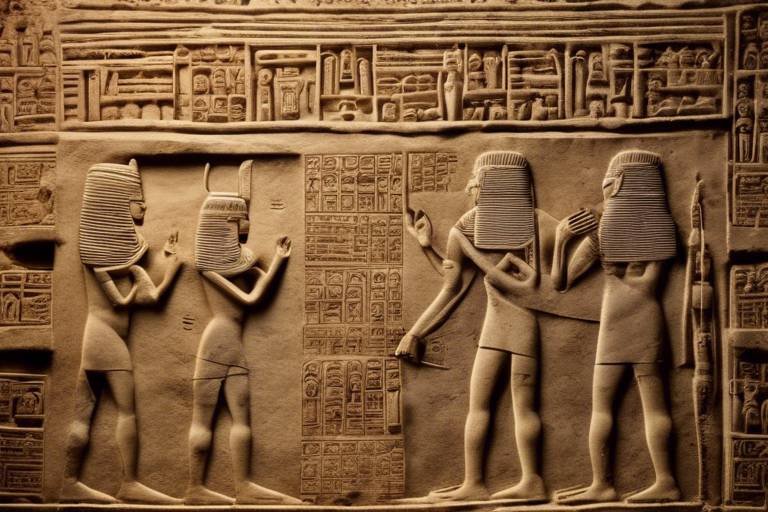The Mystery of the Lost Civilizations of Southeast Asia
Embark on a journey through time and unravel the enigmatic disappearance of ancient civilizations that once thrived in the lush landscapes of Southeast Asia. These lost civilizations, shrouded in mystery and intrigue, have left behind a trail of archaeological puzzles waiting to be deciphered, offering a glimpse into the rich history of the region that remains hidden beneath the surface.
As we delve into the remnants of these lost civilizations, we are confronted with the grandeur and architectural marvels of the Khmer Empire, whose legacy looms large in the jungles of Cambodia. The iconic Angkor Wat stands as a testament to their prowess, inviting us to explore the secrets of their rise and fall in Southeast Asia, a story waiting to be uncovered and told.
Amidst the verdant landscapes of Myanmar lies the enigmatic Pyu civilization, a lesser-known ancient society renowned for its advanced urban planning and sophisticated culture. The disappearance of the Pyu civilization raises questions and offers insights into the complexities of the lost civilizations of Southeast Asia, leaving us to ponder the mysteries of their demise.
Travel back in time to the maritime kingdom of Champa in present-day Vietnam, a forgotten realm that once thrived along the coast, boasting a unique culture and rich heritage. The decline of Champa and its eventual disappearance from historical records beckon us to explore the factors that led to the vanishing of this once vibrant kingdom, leaving behind echoes of a bygone era.
Uncover the ancient Ban Chiang culture of Thailand, a civilization known for its exceptional pottery and metallurgy, showcasing the artistic and technological prowess of its people. The decline of the Ban Chiang culture offers a glimpse into the challenges faced by ancient societies, highlighting the fragility of civilizations in the face of changing landscapes and circumstances.
Journey deep into the jungles of Cambodia to discover the lost city of Mahendraparvata, a hidden metropolis obscured by dense foliage and steeped in mystery. The archaeological evidence unearthed in Mahendraparvata unveils a world long forgotten, shedding light on the intricate web of civilizations that once thrived in Southeast Asia.
Trace the maritime empire of Srivijaya in present-day Indonesia, a strategic powerhouse that wielded influence across the region, only to fade into obscurity with the passage of time. The vanished kingdom of Srivijaya serves as a reminder of the transient nature of power and the enduring legacy of ancient civilizations in shaping the landscape of Southeast Asia.
Lastly, immerse yourself in the legacy of the Dong Son culture of Vietnam, a bronze age civilization celebrated for its intricate bronze drums and advanced metalworking techniques. The enduring impact of the Dong Son culture resonates through the ages, underscoring the importance of preserving and understanding the rich tapestry of history woven by the lost civilizations of Southeast Asia.
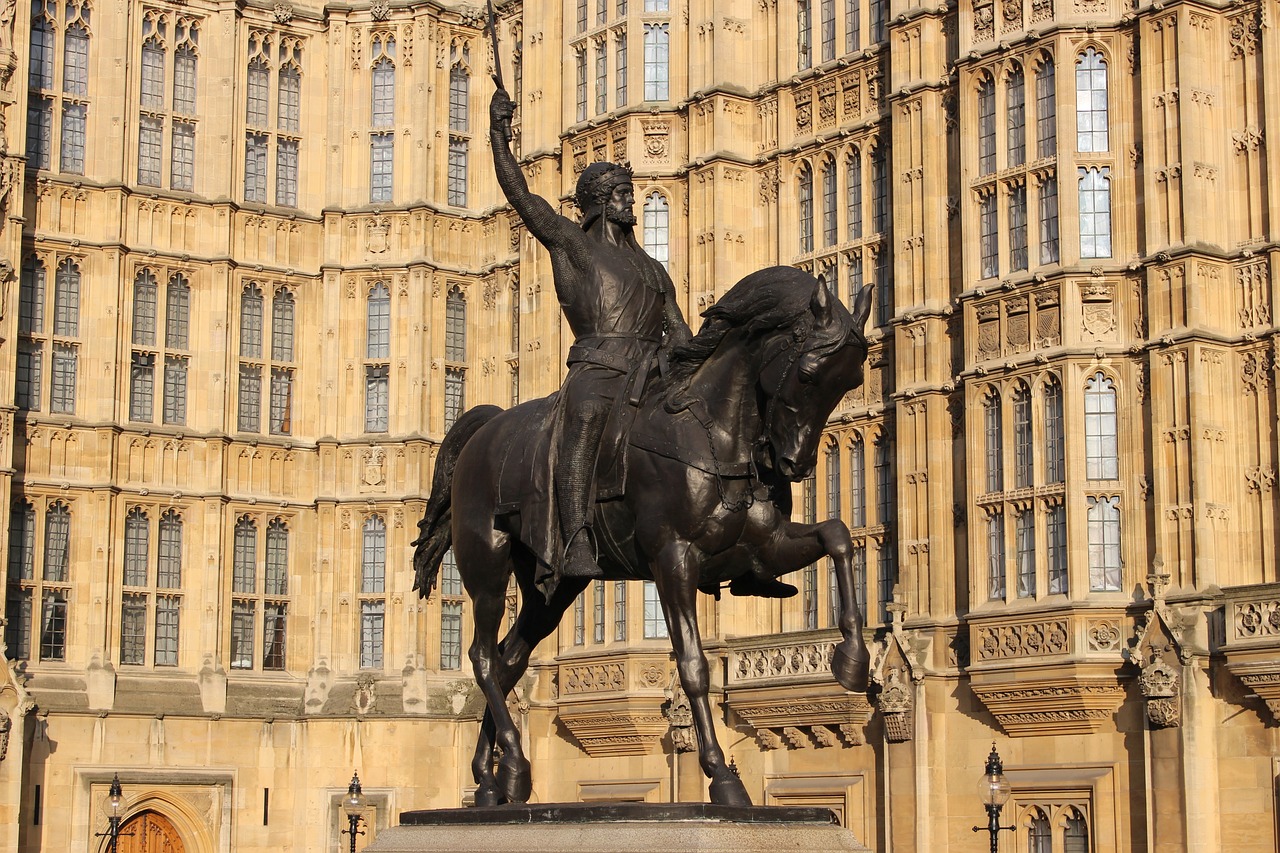
The Khmer Empire's Legacy
Exploring the enigmatic disappearance of ancient civilizations in Southeast Asia and the archaeological puzzles left behind, shedding light on the rich history of the region waiting to be uncovered.
Delve into the grandeur and architectural marvels of the Khmer Empire, including the iconic Angkor Wat, and unravel the secrets of their rise and fall in Southeast Asia.
The Khmer Empire, once a powerful and influential civilization in Southeast Asia, left behind a legacy of awe-inspiring architectural wonders that continue to captivate visitors to this day. At the heart of their empire stood Angkor Wat, a monumental temple complex that stands as a testament to their engineering prowess and cultural sophistication. The intricate carvings, towering spires, and vast reservoirs of Angkor Wat reflect the grandeur of the Khmer civilization at its peak.
However, the legacy of the Khmer Empire is not just in its architectural achievements but also in the enigmatic mysteries surrounding its rise and fall. What led to the decline of this once-mighty empire? Was it due to internal conflicts, external invasions, or environmental factors? Unraveling these mysteries provides a glimpse into the complex tapestry of history that shaped Southeast Asia.
As we delve deeper into the Khmer Empire's legacy, we uncover not just a story of monumental structures but also a narrative of cultural richness and historical significance. The intricate stone carvings depicting Hindu epics, the sophisticated urban planning of Angkor, and the spiritual beliefs embedded in the architecture all contribute to the mystique of this ancient civilization.
Through the exploration of the Khmer Empire's legacy, we not only gain insights into the past but also reflect on the enduring impact of history on the present. The remnants of their civilization serve as a reminder of the transient nature of power and the enduring legacy of human ingenuity in the face of time.
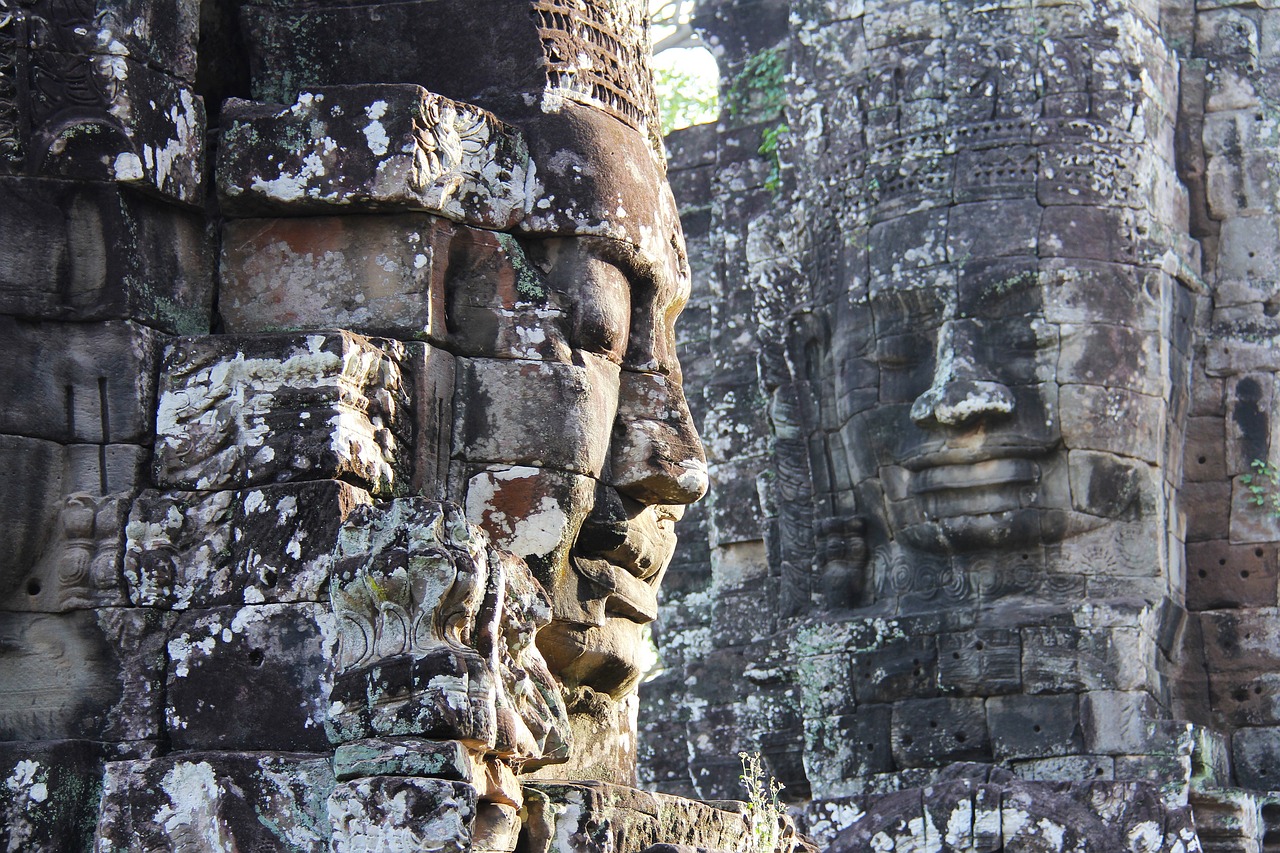
The Mysterious Angkor Wat
Angkor Wat, the majestic symbol of Cambodia's cultural heritage, stands as a testament to the ingenuity and architectural prowess of the ancient Khmer civilization. This sprawling temple complex, shrouded in mystery and grandeur, is a marvel of human achievement that continues to captivate visitors from around the globe.
Constructed in the early 12th century by King Suryavarman II, Angkor Wat was dedicated to the Hindu god Vishnu before later transforming into a Buddhist temple. Its intricate bas-reliefs, towering spires, and vast moats reflect a harmonious blend of spiritual devotion and artistic excellence.
The sheer scale of Angkor Wat, covering an area of over 400 acres, raises questions about the engineering capabilities of its builders and the logistical challenges they overcame. How did ancient artisans transport massive sandstone blocks from quarries located miles away? What inspired the intricate carvings depicting epic tales from Hindu mythology?
Legends and folklore surround Angkor Wat, adding to its enigmatic aura. Some believe that the temple was designed as a microcosm of the universe, with its central tower symbolizing the mythical Mount Meru. Others speculate about hidden chambers and undiscovered treasures concealed within its labyrinthine corridors.
Despite centuries of study and exploration, Angkor Wat continues to reveal new secrets and raise more questions than answers. Its allure lies not only in its physical beauty but also in the mysteries that shroud its origins and purpose, inviting us to unravel the enigma of this ancient wonder.
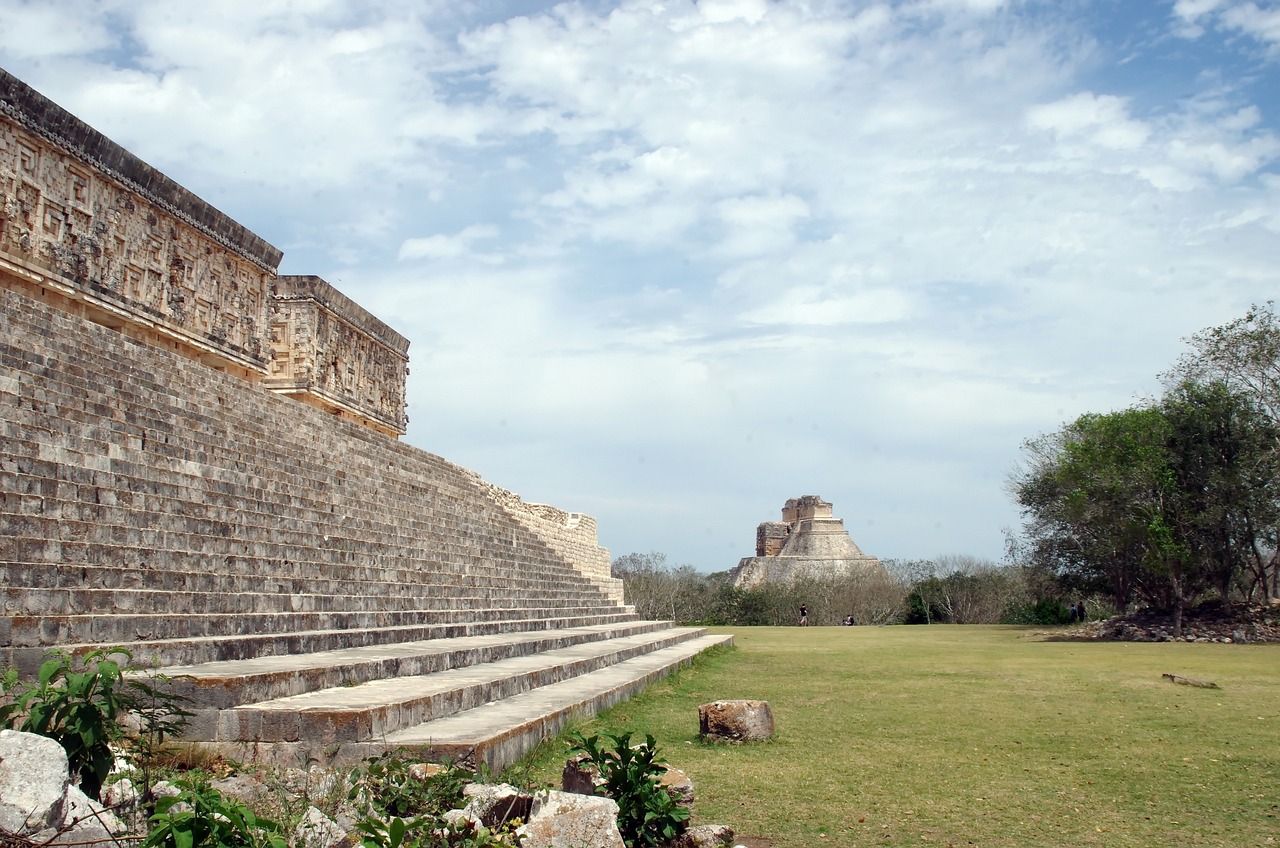
The Enigmatic Pyu Civilization
The Pyu civilization of Myanmar remains a fascinating enigma in the realm of Southeast Asian history. Flourishing between the 1st century BCE and the 9th century CE, the Pyu city-states were known for their advanced urban planning, intricate irrigation systems, and distinctive art forms. The city of Sri Ksetra, the largest Pyu settlement, boasted impressive city walls and elaborate Buddhist stupas, reflecting a sophisticated society.
Archaeological excavations have revealed valuable insights into the Pyu civilization, shedding light on their agricultural practices, trade networks, and social structure. The Pyu people were skilled in pottery making, producing a wide range of ceramic vessels adorned with intricate designs. Their mastery of metallurgy is evident in the discovery of bronze artifacts, indicating a high level of craftsmanship.
Despite their achievements, the decline of the Pyu civilization remains shrouded in mystery. The reasons behind their disappearance from historical records are still debated among scholars. Some theories suggest environmental factors such as droughts or floods, while others propose political instability or external invasions as possible causes.
The legacy of the Pyu civilization endures through the remnants of their ancient cities and artifacts, offering a glimpse into a lost chapter of Southeast Asian history. By unraveling the mysteries surrounding the Pyu culture, archaeologists and historians continue to piece together the puzzle of this enigmatic civilization.

The Forgotten Kingdom of Champa
The Forgotten Kingdom of Champa holds a significant place in the history of Southeast Asia, known for its maritime prowess and unique cultural heritage. Situated in present-day Vietnam, the Champa Kingdom flourished for centuries, leaving behind a legacy that still intrigues historians and archaeologists.
One of the defining features of the Champa Kingdom was its maritime power, which allowed it to establish trade networks and exert influence over a vast region. The Chams, the ethnic group that formed the core of the kingdom, were skilled seafarers and traders, contributing to the kingdom's prosperity and cultural richness.
Archaeological findings from sites like My Son reveal the architectural sophistication of the Champa civilization, with intricately carved temples and towers that reflect their spiritual and artistic achievements. These structures stand as a testament to the kingdom's grandeur and artistic prowess.
Despite their achievements, the Champa Kingdom faced various challenges, including conflicts with neighboring powers and internal strife. The gradual decline of the kingdom can be attributed to a combination of factors, such as external invasions, changes in trade routes, and political instability.
Over time, the once vibrant Champa Kingdom faded from prominence, eventually disappearing from the historical records. The legacy of Champa lives on in the remnants of its architectural wonders and the cultural influences it imparted on the region, serving as a reminder of a lost civilization that once thrived in Southeast Asia.

The Intriguing Ban Chiang Culture
The Ban Chiang culture of Thailand holds a special place in the realm of ancient civilizations, known for its exceptional pottery and metallurgy that date back thousands of years. This intriguing culture flourished in the Ban Chiang region, showcasing remarkable artistic skills and technological advancements for its time. The Ban Chiang people were pioneers in the art of metallurgy, creating intricate bronze artifacts that reflected their sophisticated craftsmanship and cultural sophistication.
Archaeological excavations in the Ban Chiang area have unearthed a treasure trove of artifacts, including bronze tools, jewelry, and pottery adorned with intricate designs. These archaeological findings provide valuable insights into the daily life, social structure, and religious beliefs of the Ban Chiang civilization. The intricate pottery of the Ban Chiang culture is particularly notable, showcasing a high level of artistic expression and technical skill.
The decline of the Ban Chiang culture remains a subject of speculation among historians and archaeologists. Some theories suggest environmental factors, changes in trade routes, or conflicts with neighboring societies as possible reasons for the decline of this once-thriving civilization. Despite its eventual disappearance, the legacy of the Ban Chiang culture lives on through its remarkable artifacts and the ongoing research efforts to unravel the mysteries of this ancient civilization.

The Lost City of Mahendraparvata
The Lost City of Mahendraparvata, nestled deep within the dense jungles of Cambodia, stands as a testament to the mysteries of ancient civilizations in Southeast Asia. This enigmatic metropolis, hidden from the world for centuries, offers a glimpse into a bygone era of grandeur and sophistication.
Archaeological excavations in Mahendraparvata have unearthed a wealth of artifacts and structures, revealing a highly advanced urban center that thrived in the heart of the jungle. The intricate stone carvings, towering temples, and elaborate water management systems attest to the engineering prowess of its inhabitants.
The discovery of Mahendraparvata has sparked debates among historians and archaeologists regarding its purpose and the civilization that once flourished within its walls. Was it a religious center, a bustling trade hub, or a royal capital shrouded in myth and legend?
Legends and folklore surrounding Mahendraparvata add to its mystique, with tales of hidden treasures, ancient curses, and lost rituals captivating the imagination of those intrigued by the allure of forgotten realms. The city's remote location and the challenges of exploring its ruins only add to the aura of mystery that surrounds it.
As researchers continue to uncover the secrets of Mahendraparvata, piecing together its history and unraveling the enigmas of its past, the lost city stands as a poignant reminder of the impermanence of civilizations and the enduring legacy they leave behind.

The Vanished Kingdom of Srivijaya
Once a powerful maritime empire that dominated trade routes in Southeast Asia, the Kingdom of Srivijaya holds a mysterious place in history, having vanished from the annals of time with enigmatic swiftness. Situated in present-day Indonesia, Srivijaya's strategic location made it a pivotal player in the region, controlling crucial sea passages and fostering a flourishing trade network that connected diverse cultures.
The legacy of Srivijaya is shrouded in intrigue, with scholars piecing together fragments of its history from scattered archaeological remains and ancient texts. The kingdom's decline and eventual disappearance remain a puzzle, leaving behind a void in Southeast Asian history that continues to captivate researchers and enthusiasts alike.
Exploring the factors that led to Srivijaya's demise reveals a complex tapestry of political upheavals, external pressures, and environmental changes. As neighboring powers rose in prominence and trade dynamics shifted, Srivijaya found itself grappling with challenges that ultimately contributed to its downfall.
Archaeological excavations in the region have unearthed remnants of Srivijaya's once-glorious capital, revealing traces of its sophisticated urban planning, intricate architecture, and cultural richness. The intricate carvings, inscriptions, and artifacts discovered offer glimpses into the kingdom's vibrant past, hinting at the grandeur that once defined this lost civilization.
Despite its disappearance from historical records, Srivijaya's influence continues to echo through the cultural heritage of Southeast Asia, reminding us of the dynamic interactions and exchanges that shaped the region's diverse identities. The enigma of Srivijaya serves as a testament to the transient nature of empires and the enduring allure of unraveling the mysteries of the past.
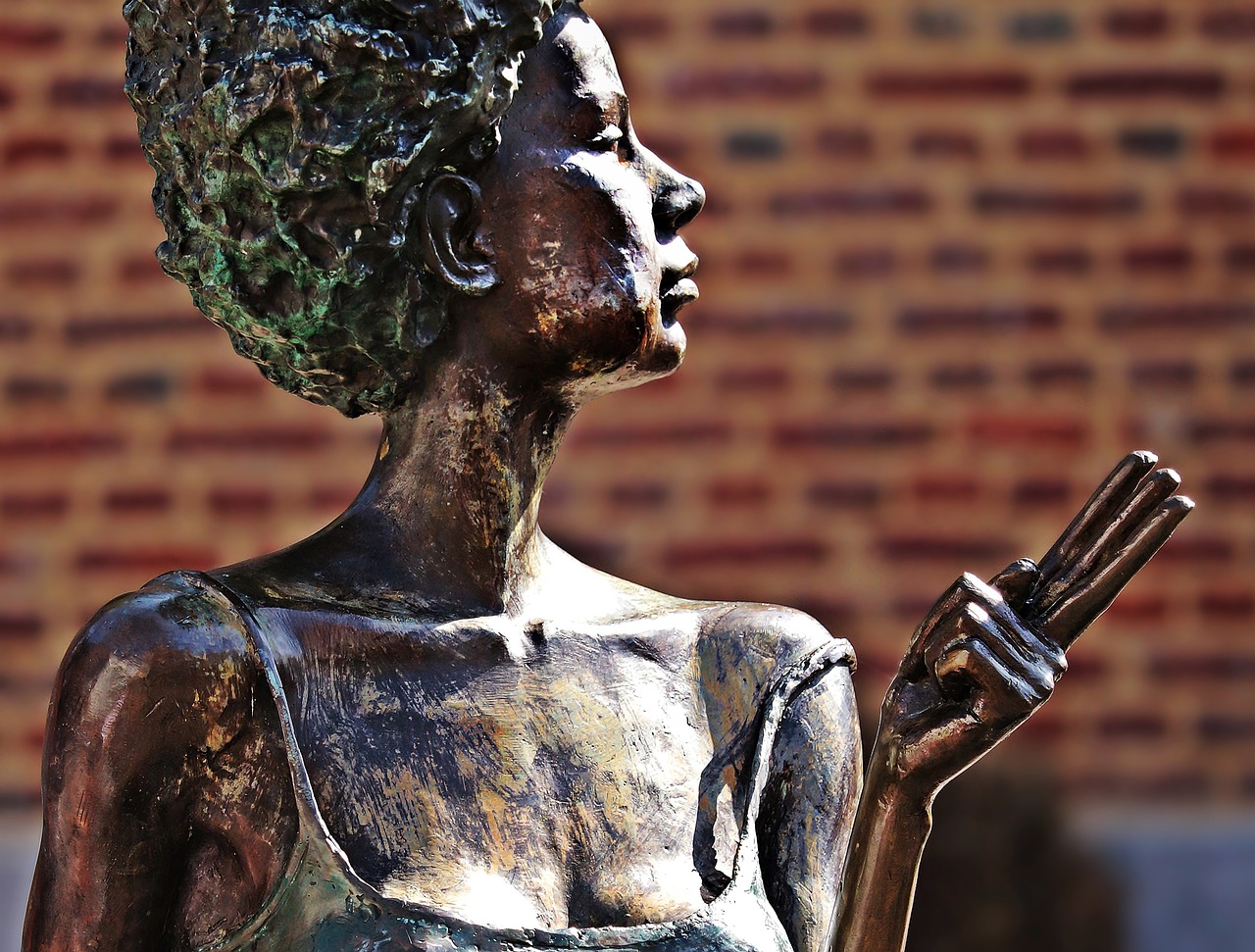
The Legacy of the Dong Son Culture
The Dong Son culture of Vietnam holds a significant place in the annals of Southeast Asian history, known for its remarkable advancements in bronze metallurgy. The legacy of the Dong Son civilization reverberates through time, echoing the craftsmanship and artistic achievements that continue to captivate scholars and enthusiasts alike.
One of the most iconic contributions of the Dong Son culture is the exquisite bronze drums that exemplify their mastery of metalworking. These drums, adorned with intricate designs depicting scenes of daily life, rituals, and mythical creatures, serve as a testament to the artistic sophistication and technical skill of the Dong Son artisans.
Furthermore, the Dong Son culture's expertise in bronze casting extended beyond drums, encompassing a wide array of tools, weapons, and ceremonial objects. Their intricate craftsmanship and innovative techniques in metallurgy set them apart as trailblazers in the ancient world, leaving a lasting imprint on the cultural landscape of Southeast Asia.
The enduring legacy of the Dong Son civilization is not confined to the realm of material culture alone. Their artistic achievements and technological innovations have influenced subsequent generations, shaping the artistic traditions and metalworking practices of Southeast Asia for centuries to come.
Exploring the remnants of Dong Son artifacts scattered across the region offers a glimpse into the ingenuity and creativity of this ancient civilization. From the intricate patterns adorning bronze drums to the functional yet aesthetically pleasing tools, each artifact tells a story of a culture that thrived on innovation and artistic expression.
In conclusion, the legacy of the Dong Son culture stands as a testament to the ingenuity and creativity of ancient Southeast Asian civilizations. Through their mastery of bronze metallurgy and artistic endeavors, the Dong Son people have left an indelible mark on the cultural heritage of the region, inspiring admiration and fascination among modern-day scholars and history enthusiasts.
Frequently Asked Questions
- What caused the disappearance of these ancient civilizations in Southeast Asia?
The disappearance of these ancient civilizations in Southeast Asia remains a subject of mystery and speculation among archaeologists and historians. Factors such as environmental changes, warfare, and shifts in trade routes are believed to have played a role in their decline.
- Are there any ongoing archaeological efforts to uncover more about these lost civilizations?
Yes, archaeologists continue to conduct research and excavations in various sites across Southeast Asia to gain a deeper understanding of these lost civilizations. New discoveries and technological advancements are constantly shedding light on the enigmatic past of the region.
- What significance do these ancient civilizations hold in the history of Southeast Asia?
These ancient civilizations played a crucial role in shaping the cultural, architectural, and historical landscape of Southeast Asia. Their legacies continue to inspire curiosity and fascination, offering valuable insights into the region's rich and diverse past.





